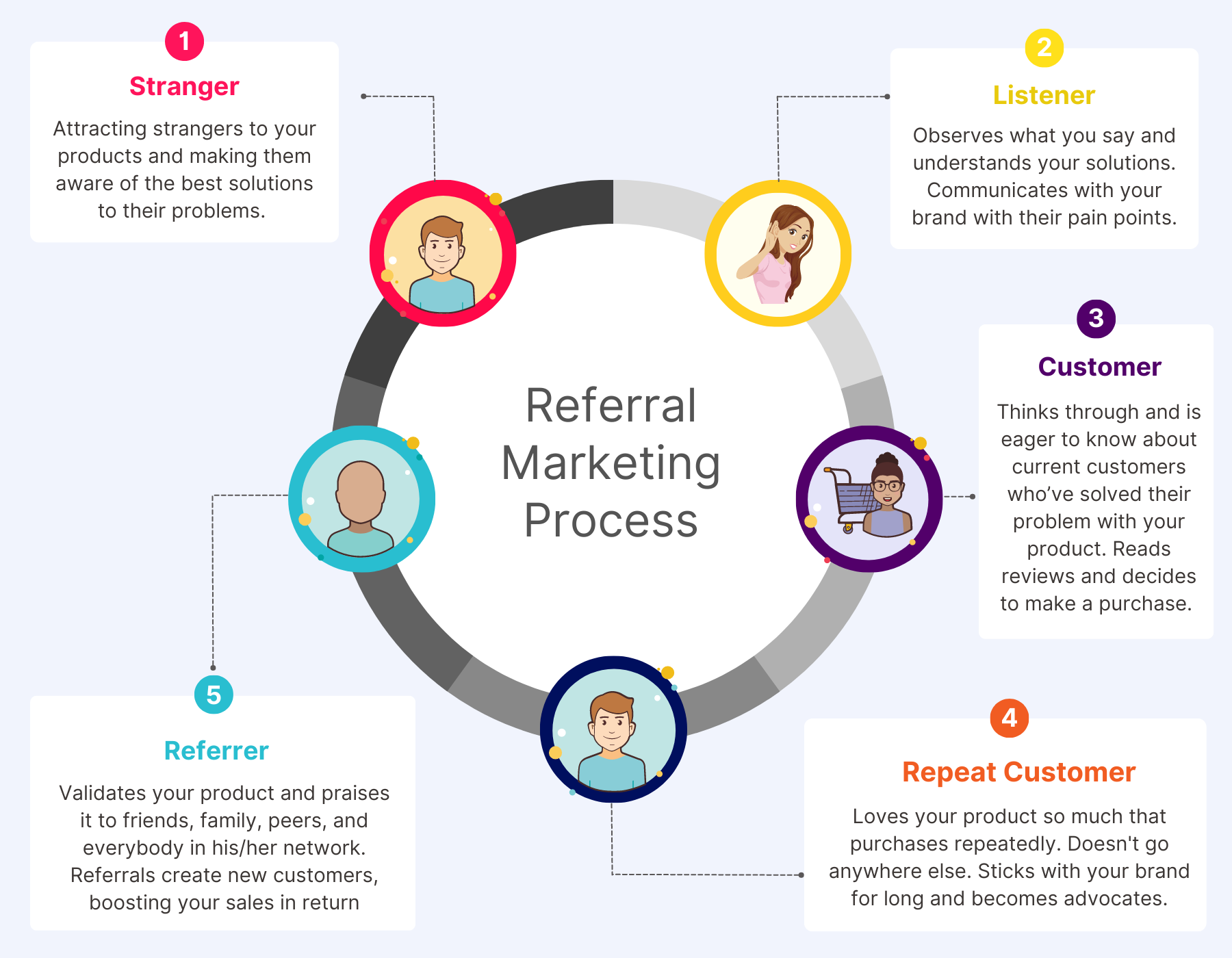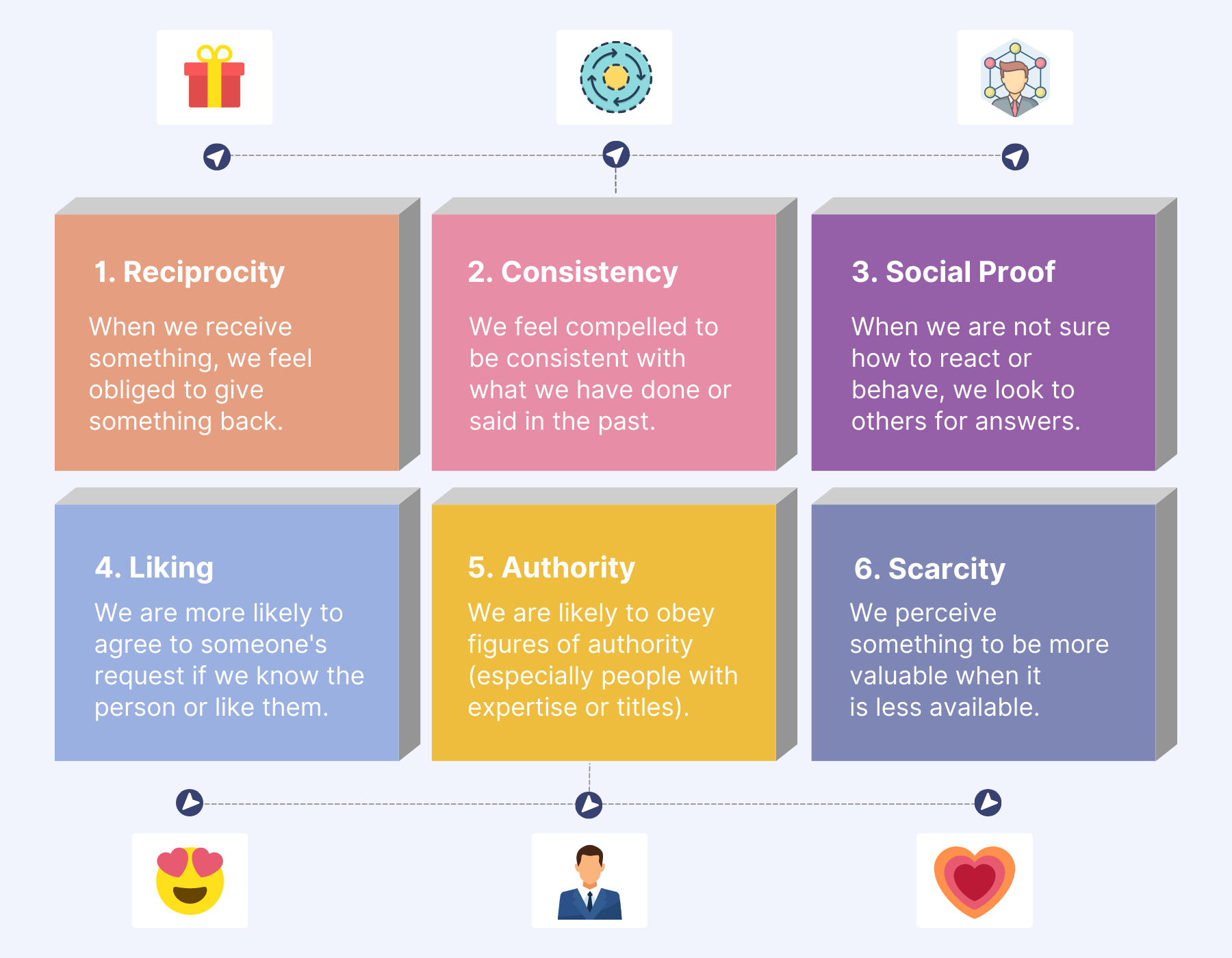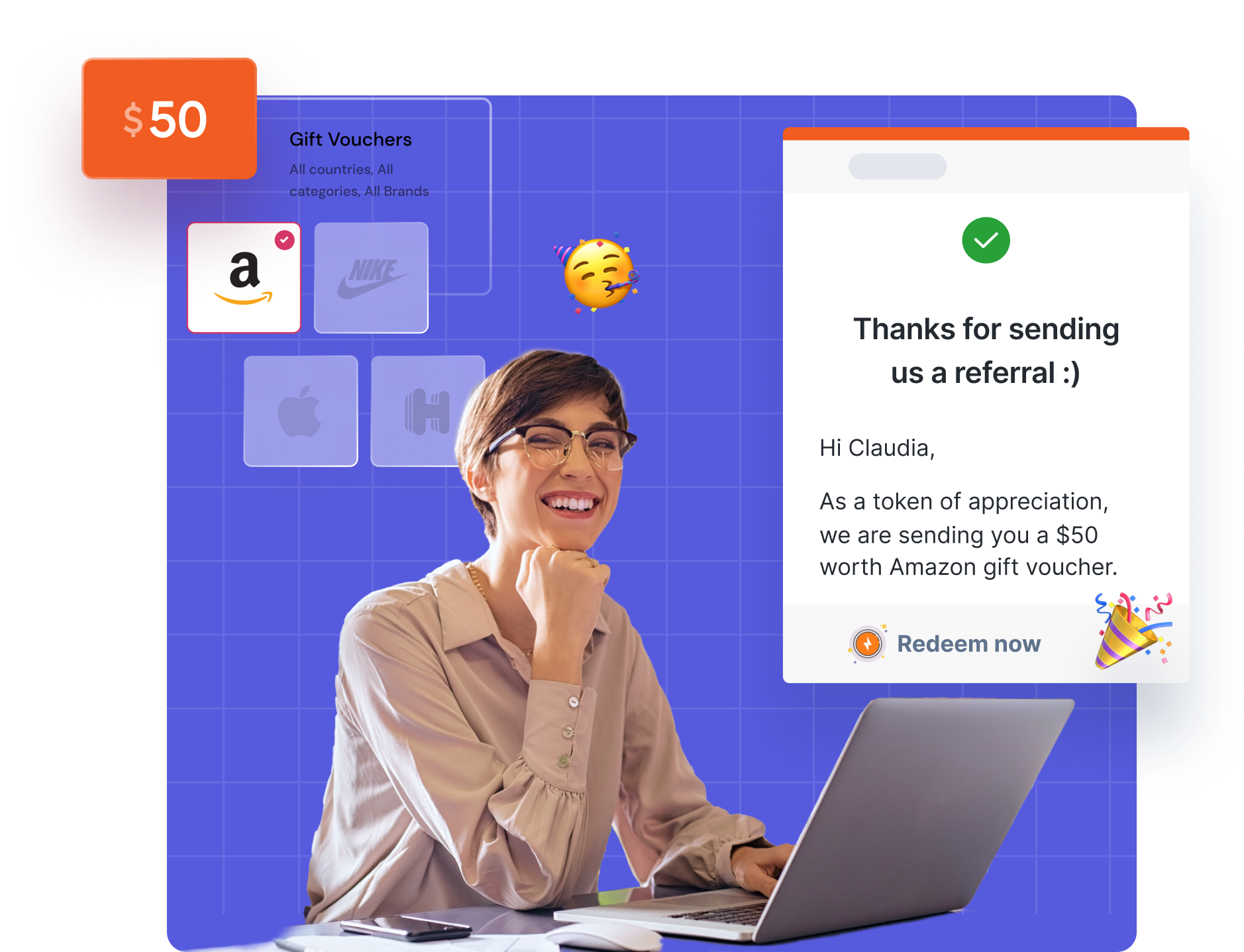Table of Contents
Now, that’s the kind of impact every brand dreams to create—beyond making money. That moment of ‘universal acceptance’ defines the ultimate success of a business.
But creating that ‘impact,’ where your customers go to an extent of using your brand name naturally as a verb takes immense marketing efforts, patience, and persistence. A brand’s journey from being a noun to becoming a verb isn’t easy. Most importantly, it doesn't happen overnight.
Speaking of marketing efforts, although the current technological advancements give you the convenience of executing your brand promotions in various ways, referrals are still one of the highest forms of flattery. Hands down, they are an effective way to acquire new customers with minimal (or no) marketing efforts and spend.
Many brands have leveraged referral marketing in the past and have witnessed success. Don’t believe us?
Let’s take Airbnb for example.
The birth of ‘airbnbing’ was simple—the idea was to get people to stay in a neighborhood flat overnight or to borrow a family’s rollaway bed during travel. With this simple intention in mind, they increased their guest arrivals from just 21000 (in 2009) to a whopping 1+ billion (in 2021). (Source: AirBnB)
So how did this born-out-of-necessity business make all its way to fame? Or perhaps, what made Airbnb a billion-dollar business?
Any guesses? 🤔
Well, it's because of a well-planned, well-timed, and well-executed ‘referral marketing program.’
Referral marketing is one of the most cost-effective growth channels for a business. Period.
To help you make the most of this marketing strategy, we have put together a detailed guide that explains the basics of referral marketing, lessons to learn from big brands, mistakes to avoid, tips to create a successful referral program, and more.
Let’s dive in.
What is referral marketing?
- A referral is an influencer who advocates for new under-the-radar businesses, whether online or offline.
- Marketing is the process of acquiring and engaging an audience until conversations culminate into sales.
- Holistically, Referral marketing is about harnessing a referral's influence to generate excitement around businesses—it could be ‘one-to-one’ or ‘one-to-many.’
How does referral marketing work?
Let’s understand referral marketing with a real life scenario. Let’s assume that you want to buy a brand new washing machine. Right after exploring some options, you’ll check out all the customer reviews on the internet and might even ask your friend (who bought that product before) to share his/her experiences with the brand.
Your friend then validates the product, gives you an assurance that it’s a great product, convincing and persuading you to make a purchase.
That’s referral marketing in a nutshell.

Referral marketing has similar effects as word-of-mouth, but the only difference is that the company initiates and manages it.
This works because consumers tend to trust businesses more after getting a recommendation from another person, especially if it’s someone close. In fact, according to a report from Mckinsey, 50% of the purchasing decisions are influenced by referrals.
A good example of the effectiveness of word-of-mouth marketing is the world-renowned ‘Dropbox.’ In 2008, it only had 100K registered users. By 2019, it grew to 600M, with 14.3M paid users.
Partially, it was a result of their well-timed referral program. Anyone could invite a friend to use their service. If the invitation was accepted, the referrer would get more cloud space.
How does referral look in action?
To refer a friend, your customer needn’t wear the hat of a sales rep. If they are happy with how your brand is perceived, they might be inspired to tell their friends about it. Sounds simple, isn’t it?
This is how it should be done: When customers are at the check-out point, ask them if they would be willing to refer a friend. Most of the time, a shout-out is free. But announce a $30 gift card for every referral and they’ll not just rave but write shining reviews with mad enthusiasm.
How much influence does a referral have on new buyers?
According to a McKinsey study, Word of Mouth Marketing influences 20% to 50% of purchase choices.
While organizations invest a significant percentage of their marketing budget on lead generation, the majority of new customers rely their decision on peer opinion. This only suggests one thing. Referral sales involve little financial input, yet they generate a large number of very desirable warm leads.
Referring a friend nowadays does not imply encouraging a close acquaintance, but rather influencing millions and sparking a movement.
The spurt of social media has blurred all distinctions between "referral marketing" and "affiliate marketing" to the point that these terms are used interchangeably.
Today's challenge is determining which customers can be brand advocates and how much to invest in them. Consider it as selecting a capable influencer from a swarm to talk about your brand.
Not everyone can become the ideal advocate you're searching for. CRMs have increasingly been the go-to resource for this. Businesses may harvest valuable data from past transactions and use statistical models to forecast client lifetime value (CLV).
A successful business that has a great rapport with its customers will not only receive more customers, but better customers.
Referral marketing is best fueled among a community where trust is key; there has to be some degree of confidence in customers’ motivation to tell their friends about your business.
We figured out that it would be perfect to put in a single guide, all the insight we managed to gather from all the campaigns we hosted, and offer it for free to all the people who dig the idea of growing their business with referral marketing. This is more a set of actionable tactics than it is another “ultimate guide”. Enjoy!
So no doubt that referral marketing is one of the most cost-effective growth channels. Period. Leveraging your existing, loyal customer base to bring in new ones is a sure way to bring in new users and revenue for your business. Whether you’re getting ready to launch your first referral campaign or looking to optimize your referral program, you’re in the right place.
You might have various channels you can opt for but referral marketing is the easiest way to accumulate more customers for your business.
The psychology of referral marketing: Why it works like a charm
It’s pretty bold to claim referral marketing always works, but we have found it to be true. Marketing may seem difficult, especially for beginners. However, the secret is to push the proper buttons in a customer’s psyche.
We have the drive for social belonging instilled into us automatically when we were born. Trust, social approval and value, reciprocity, etc. are all very important to us as humans.
The incentive and benefits need to be compelling for a person to decide to participate. It encourages the referrers to put in some effort to get a reward and realize they’ll get a social advantage.
The assessing factors are the actual effort required and the risk of the referee's experience being poor, which will lead to the opposite of social approval and value.
The 6 principles of persuasion
According to Dr. Robert Cialdini, the author of the book Influence: The Psychology of Persuasion, there are 6 principles of influence.

As marketing is a lot about influencing people’s decisions, we are going to tell you a little bit about each of them. These will help you persuade your existing customers and they may do the same to their network.
- Reciprocity: Getting mutual benefit and the feeling of someone being indebted to you, or on the other hand, when someone does you a favor or provides with a benefit, you tend to feel obliged to give back.
- Consistency or commitment: For example, you are asked by a company to leave your contact details to stay up-to-date with the news. You do it, and this increases the chances of you doing it again when the brand asks. And it will, many more times.
- Social proof: They say we need to get out of the standards society makes up, but all people still crave social proof in one way or another. We want acceptance, and not (only) from brands, but mostly from the people close to us. If your sibling tells you she’s tried an amazing service, you’ll be more inclined to try it as well. Likewise, the person referring the product to you will fulfill their craving if you like the product.
- Liking: Continuing the topic of human interactions, people are likely to try something a loved one tried! It could be a friend, relative, partner, crush, or even a celebrity. Hopefully, most of your customers have people who like them, and hearing an honest recommendation from them will become a trigger.
- Authority: Hearing someone knowledgeable talk about a product or service and recommending it definitely touches some strings. By providing more information on your products and services along with the incentives, you’re going to get more conversions because the referrer becomes a sort of authority. People are more likely to listen to the advice given by a well-informed individual.
- Scarcity: Finally, the principle we see so much in advertisements. Motivating people to do something because of the scarcity of the offer works like a charm. The reaction is called FOMO (fear of missing out), and people most often convert quickly due to an understanding that the product or service will soon be sold out.
So, why does referral marketing always work? Because it touches on the psyche of both potential and existing customers more than other means of promoting businesses.
We’re going to explore the topic further to give you clear information.
Benefits of referral marketing: 10 Reasons they are effective
Referral programs are considered perfect for businesses offering products and/or services because they make the existing customers feel special and encourage them to share the business with people who are close to them.
Another reason to try referral marketing is customer lifetime value or LTV. This is the worth of a customer to a company throughout their relationship. It’s how much time they spend with you, and how much they buy and engage with the brand.
Here are some key benefits of referral marketing:
Types of referral marketing programs
The beauty of referral marketing is that there are several ways to satisfy consumers, partners, and employees to encourage referral behavior. These are four common methods of referral marketing that organizations such as NetSuite and Dropbox are using to increase their revenue.
- Direct referrals (word of mouth)
- Email referrals
- Referrals from reviews
- Social media referrals
1. Direct referrals (word of mouth)
The most optimal type of referral that businesses rely on is direct referral. It entails a highly driven consumer who is not only aware of the product but also appreciates the advantage. They are capable of persuading peers and anyone within their grasp to become new consumers.
What makes this so effective? as a result of cost-effectiveness It does not need large-scale promotion, but rather depends on consumers' faith in their peers who are early adopters.
Example: Zappos accomplished this by empowering its customer-facing teams to assist consumers. Because of this degree of trust, they acted more like brand ambassadors than typical employees entrusted with a task roster. Their staff also abandoned scripts, allowing them to build stronger ties with consumers.
2. Email referrals
Marketers have utilized referral emails for years to target possibilities inside their current network. They do this by identifying subscribers who can vouch for the brand and sending them reward-based emails. The emails do not have to adhere to specific standards; instead, they may be brief and to-the-point communications that position your brand as a value-driver in the network.
Example: Dropbox accomplished this by sending simple emails, as seen above, to their referrals, allowing them to issue invites to their peers.
This activity was awarded with up to 16GB of free storage space. It was one of the most successful referral programmes since the incentive benefitted both the recipient and the referral.
3. Referral from reviews
Did you know that today the majority of buying decisions are made based on reviews? Local searches on products and services help buyers decide whether the brand meets their expectations.
Brands that know the importance of reputation management do what it takes to ensure they have a favorable opinion in the public’s eye. brands that aren’t taking this exercise seriously risk losing potential customers to their competitors.
4. Social media referrals
Did you know that today the majority of buying decisions are made based on reviews? Local searches on products and services help buyers decide whether the brand meets their expectations.
Why referral marketing programs fail?
Referral marketing, like all other advertising strategies, has limitations and could fail if used incorrectly or in the wrong circumstance. To begin with, it is not a panacea that will fix all marketing conundrums.
Here are six reasons your referral marketing programs can fail terribly:
1. Choosing boring rewards
It isn’t referral marketing when you just throw a so-so incentive at a customer and ask them to refer a friend or family member to your business. Referrals are persons that have sentiments. While one referral may want an e-gift card, the other may desire experiential gifting. The only way to find out which rewards are most effective is to perform a brief poll before the campaign.
2. Incentivising referrals and disregarding referred
Another reason why marketers agree that only referrals get a reward but not the referred is penny pinching. This might result in less desirability in a potential buyer’s eyes who just heard about your business through a friend. Rewarding is most effective when it’s a win-win for both referral and referred - monetarily or otherwise.
3. Inconsistent outreach
You don't perform referral marketing once and then forget about it. To achieve clear outcomes, the program must be ongoing and expanded. Send nurturing emails with incentives to your present and new consumers on a regular basis. If this is not done, your brand will be forgotten, and all progress will be reset.
4. Wrong audience = Zero progress
Are you certain about your target persona and who the strongest advocates from existing customers are? People will glance at your website rather than buy from it if this is not the case.
It is essential that your future customers be well-informed decision makers with confirmed purchasing intent. Similarly, while selecting a messenger, ensure that they are completely satisfied as a customer and fully grasp your marketing campaign.
5. Unwieldy referral program
A bad referral program is an off switch to referral behavior. Asking to fill out complicated forms, traverse complex links, and figure out exclusive processes would make referrals finicky and less likely to finish the steps required to recommend their peers or communities to try your brand.
6. Dizzying referral program
When an employee referral scheme is successful, it is typically when your employees are aware of the program. It takes a few workshop sessions to grasp how and when to impact client sensibilities. For businesses, this means concentrating on their weakest links and shoring up their knowledge.
Tips to build a successful referral marketing program
Here are some tips to make your referral marketing program work like a well-oiled engine:
- Offer a valuable incentive: The reward you offer must be valuable enough to motivate your customers to refer their friends. Make sure to give something that your customers actually want and can use.
- Make it easy to participate: The referral process should be easy and straightforward. Your customers should be able to refer their friends with just a few clicks or taps.
- Personalize your invitations: Personalized invitations can be more effective in motivating customers to refer their friends. Segment customers based on demography while giving a glimpse of what they will get as a reward if they referred someone.
- Use multiple channels to promote your program: Promote your referral program through various channels, such as email, social media, and your website. This can increase the visibility of your program, helping your brand reach a wider audience.
- Provide real-time feedback: Keep your customers informed about the status of their referrals. Let them know when their friends have signed up or made a purchase. This can increase their engagement and motivation to participate in the program.
- Measure and optimize: Monitor the performance of your referral program and track metrics such as referral rate, conversion rate, and customer lifetime value. Use this data to optimize your program and make improvements.
- Time your referral requests strategically: Timing is important in referral marketing. Make sure you request referrals at the right time.

Take your referral program to new heights by embedding rewards that can turn your passive fans into active brand promoters.
From branded gift cards to prepaid cards to unique experiences, our rewards marketplace has everything to make your referrers and referees motivated to take an action. It’s secure, convenient, and compliant.



